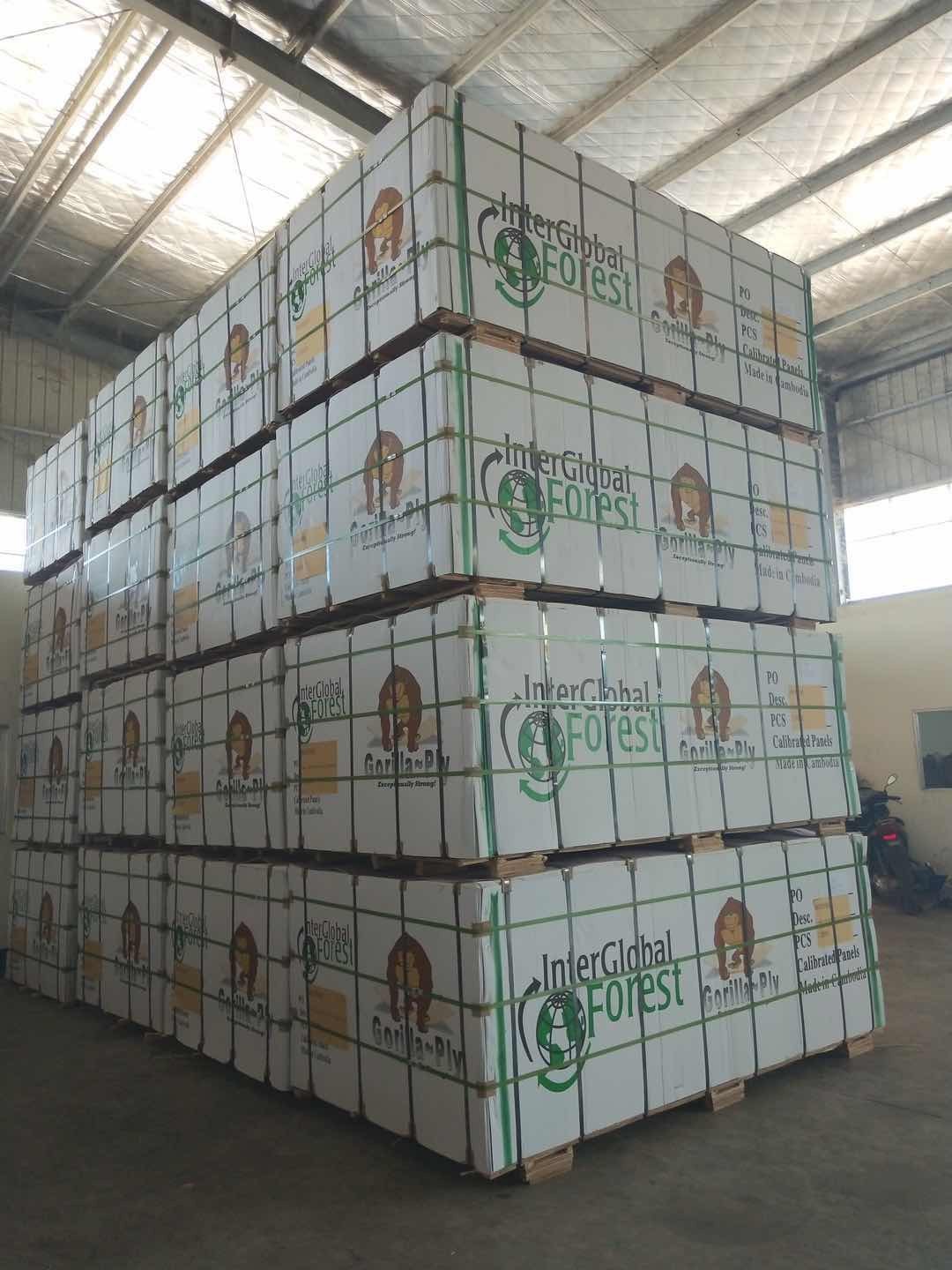Asian Plywood
Asian Plywood
Since 2002 InterGlobal Forest has been committed to finding the highest quality Hardwood Plywood manufactured in Asia. We have hired people on the ground in Asia to help control and inspect our loads since the beginning. Nothing has ever changed. Today we still have quality employees visiting our mills and making sure they are following our strict quality requirements every day.
All plywood from Asia is not created equal. Following are some advantages that we have due to our manufacturing specifications and stringent quality control. Learning these advantages will help you compete with less expensive, lowerquality products that are being sold by competitors.
1) Thickness Tolerance:
Below is a simple table that shows the thickness variance allowed in HPVA panels (Hardwood Plywood & Veneer Association), IHPA panels (International Hardwood Plywood Association) and IGF spec (our own tighter specification).
It is easy to see that our own HPVA standards allow the largest variance in thickness of all the standards! However, the IHPA standard allows thinner panels than HPVA. InterGlobal Forest is buying from suppliers that can hold tighter thickness tolerances and we are allowing less overall thickness variance. In addition, while our panels are produced as 18mm, the thickness range is within the range allowed in ¾” panels per HPVA. Thus (technically speaking) our 18mm can be called ¾” (you may notice that your plywood is marked as ¾”, ½” etc.).
2) Core quality
The poplar core veneer is made & sold by thousands of veneer mills scattered through the poplar growing region – the plywood mills do not peel this veneer themselves. This veneer is bought by the plywood mills as grade #1, #2 & #3. Simply put, the #1 highest) grade has larger pieces with fewer defects and #3 (lowest) grade has smaller pieces with greater defect. The obvious esult of using lower grade core veneer is a greater number of core voids. The second (and less obvious) result is that the smaller pieces of veneer will not go through the rolling dryer. I have seen many mills sorting the veneer by size and mixing veneer in their core lay-up process: large pieces dried in the dryer with smaller pieces that are just air dried. This will result in a panel with ide variation in moisture content – the worst possible scenario. Our strict policy is that we only allow #1 grade core veneer in our plywood.
3) Moisture control
Probably the most important factor in making a panel that will stay flat over a wide range of climate types is the core veneer moisture content. There are still many mills in Asia that use just air dried veneer in their plywood. There are also many mills in Asia that have a machine dryer but do not use it to its capabilities. While most mills know the correct moisture content for plywood (8-11%) – many do not have a moisture meter in their factory to check either the veneer dryness or the finished plywood moisture content. Our mills all use the same Wegner MM220 moisture meter that we use (a “pin-less” meter that I highly recommend). We worked with Wagner to calibrate it specifically for the hybrid poplar species used in the core veneer. (www.moisturemeters.com)
4) Three step lay-up process
Most plywood (import or domestic) is produced using a two-step process, that is, the platform is made, calibrated (sanded to thickness) and then the face/back is laminated & finish sanded. We have added a step: our platforms are made without the final cross-bands, calibrated, then the cross-bands are added, the products is repaired and then painted, then the face/back is aminated and then finished sanded. The reason for this extra step is to better control thickness tolerance and to eliminate (as much as possible) the waviness inherent to veneer core product. The platform is painted (as it is with most mills) to provide more even color to the finished panel.
5) Face veneer thickness
The primary importance of the thickness of the face/back veneer is related to the amount of sanding the panel can resist before the glue line is exposed. Thicker veneer means greater ability to sand with coarser grit paper. In addition, thinner veneer is more likely to split or check with changes in relative humidity. Many mills in Asia use “thin face” veneer, generally 0.2-0.3mm thick. Our veneer from Asia is 0.4mm (or thicker) which is comparable to US domestic production. Please note that this veneer thickness refers to raw face veneer – your finished panels will have face veneer of this thickness less what has been removed in the finish sanding process at the mill. Hence, the actual veneer thickness of what you will see is also partly determined by the quality of sanding equipment at the mill.

